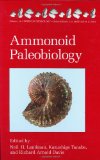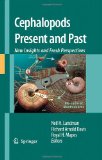Fossil cephalopods
- Ammonite Mass-Ocurences of the Alpine Lower Cretaceous
- Ammonite sutures
- Ammonites
- Ammonites (Ammonoids) - Eons, Epochs, Etc.
- Ammonites & Fossils
- Ammonites at the Black Hills Institute
- Ammonites du Jurassique
- Ammonites du poitouet du jurassique
- Ammonites et autres spirales - Hervé Châtelier
- Ammonites from Hokkaido, Japan - (japanese only)
- Ammonoid Ribs
- Ammonoids and the Triassic-Jurassic boundary in the Himalayas of southern Tibet

- Ammonoids At Union Wash, California
- Belemnite extinction and the origin of modern cephalopods 35 m.y. prior to the Cretaceous−Paleogene event

- Belemnites originated in the Triassic - A new look at an old group

- Cephalopod Bibliography
- Cephalopod Glossary
- Cephalopod Page
- Cephalopoda
- Cephalopoda
- Cephalopods
- Cephalopoda - Tree of life
- Ceratites From the Upper Muschelkalk
- Christoph Jäggi - Fossilien, insbesondere Ammoniten
- Coleoid Symposium - Coleoid cephalopods through time
- Early Triassic Ammonoid Fossils In Nevada
- Fosilni glavonosci Skofjeloskega in Polhograjskega hribovja
- Fossil Cephalopods in Utah
- Fossil Coleoidea Page
- Fossil Nautiloidea Page
- Fossils of the Gault Clay and Folkestone Beds of Kent
- International Symposium - Coleoid cephalopods through time - Free University of Berlin, 16. - 19. September 2002
- ISGS Cephalopods
- Jens-Wilhelm Janzen - Ammonites from northern Germany
- KS Fossils - Ammonoids
- Late Cretaceous nautilid beaks from near-shore/shallow water deposits of the Bohemian Cretaceous Basin (Czech Republic)

- Late Cretaceous nautilids from northern Cantabria, Spain

- Latest Campanian to Early Maastrichtian (Cretaceous) nautiloids from the white chalk of Kronsmoor, northern Germany

- Les ammonites
- Les Ammonites et autres Cephalopodes
- Middle Triassic Ammonoid Fossils From Nevada
- Morphological Disparity of Ammonoids and the Mark of Permian Mass Extinctions

- Nautiloidea
- Non-invasive approach to shed new light on the buoyancy business of chambered cephalopods (Mollusca)

- Octopus News Magazine Online - a popular news and community site devoted to cephalopods
- Quantitative biochronology of Devonian ammonoids from Morocco and proposals for a refined unitary association method

- Taphonomy and stratigraphy of Early Cretaceous ammonoid mass occurrences (Late Valanginian; Northern Calcareous Alps; Upper Austria)

- Taxonomy and biostratigraphy of middle Jurassic ammonites, western and central British Columbia
- Upper Maastrichtian cephalopods and the correlation to calcareous nannoplankton and planktic foraminifera zones in the Gams Basin (Gosau Group; Styria, Austria)

- VI International Symposium Cephalopods - Present & Past - September 16.-19. 2004
Books about fossil cephalopods
| Ammonoid Paleobiology Renowned researchers summarize the current knowledge on ammonoid paleobiology. The book begins with a description of the systematic position of the Ammonoidea within the Cephalopoda, providing the phylogenetic framework for the rest of the book. Following discussions include soft- and hard-part morphology of ammonoids, rate of growth and ontogeny, and taphonomy and ecology. Closing chapters explore the distribution of ammonoids in time and space as well as their extinction at the end of the Cretaceous. With its diverse viewpoints and new material, this resource will benefit researchers and graduate students in paleontology, marine biology, and evolutionary biology. |
|
| Cephalopods Present and Past: New Insights and Fresh Perspectives This book brings together an international group of scientists focusing on present-day and fossil cephalopods, ranging broadly from Paleozoic ammonoids to today's octopods. It has three general sections dealing with: systematics and evolution; descriptions of hard- and soft part morphology; and ecology, biogeography, and taphonomy. Several highlights include new evidence for the existence of an ink sac in fossil ammonoids, a biogeographic study of clymeniid ammonoids throughout the world, the first record of a radula in baculite ammonoids, and an in-depth study of octopus ecology in Alaska. The book is remarkable in its treatment of both fossil and living forms at the same time, with the aim of presenting the wide diversity of cephalopods now and in the past. |

